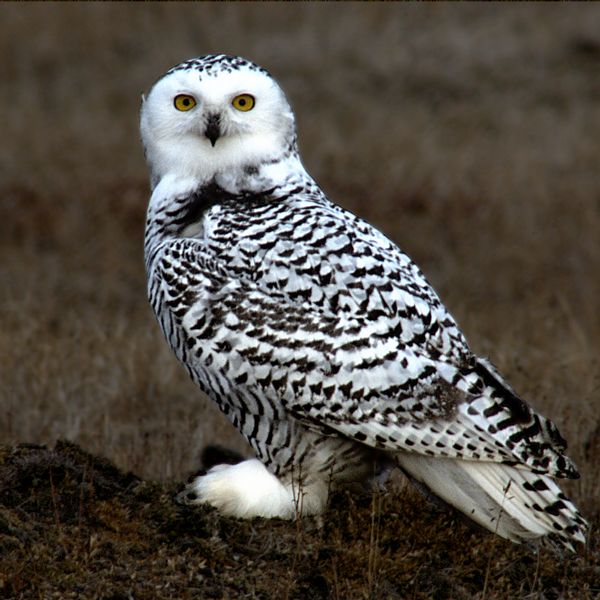Discovering The World's Biggest Owl: The Great Horned Owl
When we think of owls, images of mysterious, nocturnal creatures come to mind, often associated with wisdom and folklore. However, the biggest owl in the world is not just a figure of myth; it’s a fascinating bird that captivates the imaginations of ornithologists and nature lovers alike. The great horned owl, known for its impressive size, striking features, and remarkable hunting abilities, stands as the largest species of owl across North America and beyond. In this article, we will delve into the world of the biggest owl, exploring its characteristics, habitat, diet, and much more.
Owls have long been symbols of the night, often shrouded in mystery and intrigue. Among the many species that exist, the great horned owl truly stands out. With its tufted ears and piercing yellow eyes, this magnificent bird is not only a master of the skies but also a skilled predator. Its adaptability to various environments and its formidable presence make it a fascinating subject for study and admiration. As we explore the life of the biggest owl, we will uncover the secrets of its success as a top avian predator.
Understanding the great horned owl's role in ecosystems is vital for conservation efforts. As apex predators, these owls help regulate populations of small mammals and birds, maintaining a balance in their habitats. By learning more about the biggest owl and its ecological significance, we can appreciate the importance of preserving these majestic creatures and their environments. Join us on this journey as we learn all there is to know about the biggest owl.
What is the Size of the Biggest Owl?
The great horned owl is renowned for its impressive size, with adults typically measuring between 18 to 25 inches in height. Their wingspan can reach up to 5 feet, making them one of the largest owls in the world. But what contributes to their remarkable size?
- Body Length: The average body length ranges from 45 to 63 cm (18 to 25 inches).
- Wingspan: Their expansive wingspan can measure between 101 to 145 cm (40 to 57 inches).
- Weight: Adult great horned owls weigh anywhere from 1.4 to 2.5 kg (3 to 5.5 lbs).
Where Do the Biggest Owls Live?
The great horned owl is highly adaptable and can be found in a variety of habitats across North America and parts of South America. From urban areas to dense forests, these owls thrive in environments that provide ample hunting grounds and nesting sites. But what specific locations do they prefer?
- Forests: They often inhabit deciduous, coniferous, and mixed forests.
- Mountains: Great horned owls are also found in mountainous regions.
- Urban Areas: Surprisingly, they can adapt to city life, nesting in parks and gardens.
What Do the Biggest Owls Eat?
The diet of the great horned owl is diverse, showcasing its adaptability as a predator. These owls primarily hunt at night, using their exceptional hearing and vision to locate prey. But what exactly do they feast on?
- Small Mammals: They commonly prey on rabbits, hares, and rodents.
- Birds: Smaller birds, including pigeons and songbirds, are also on the menu.
- Reptiles: Great horned owls have been known to hunt snakes and lizards as well.
How Do the Biggest Owls Hunt?
The hunting strategy of the great horned owl is a fascinating aspect of its behavior. Equipped with silent flight capabilities, these owls can approach their prey without being detected. But how do they execute their hunting techniques?
- Silent Flight: The structure of their feathers allows for noiseless flight.
- Stealth: They often perch quietly before swooping down on unsuspecting prey.
- Powerful Talons: Their strong talons are capable of delivering a lethal grip.
What Are the Breeding Habits of the Biggest Owl?
Reproduction in great horned owls is a strategic process that ensures the survival of the species. These owls typically mate for life and exhibit interesting courtship behaviors. What do we know about their breeding habits?
- Nesting: They often use abandoned nests of other birds, such as hawks or crows.
- Eggs: A typical clutch consists of 2 to 5 eggs, which are incubated for about 30 to 37 days.
- Fledging: Young owls fledge approximately 9 to 10 weeks after hatching.
What Threats Do the Biggest Owls Face?
Despite their prowess, the great horned owl faces several threats that can impact its population and habitat. Understanding these threats is crucial for conservation efforts. What are the primary challenges faced by the biggest owl?
- Habitat Loss: Urbanization and deforestation have led to the destruction of their natural habitats.
- Pollution: Pesticides and pollutants can harm their food sources.
- Human Interaction: Collisions with vehicles and power lines pose risks to these birds.
Conclusion: Why Should We Protect the Biggest Owl?
In conclusion, the great horned owl is not only the biggest owl in the world but also an essential part of our ecosystem. Their impressive size, hunting abilities, and adaptability make them a fascinating species deserving of our attention and protection. By understanding the challenges they face and taking steps to conserve their habitats, we can ensure that future generations will continue to marvel at these magnificent birds of prey. Let us celebrate the great horned owl and recognize its vital role in maintaining the balance of nature.
Uncovering The Lives Of Bruno Mars' Sisters: A Closer Look
Exploring The Fascinating World Of FGTEEV Lexi's Age
Unveiling The Talents Of Perdita Weeks: The Rising Star Of The Screen

.jpg)
